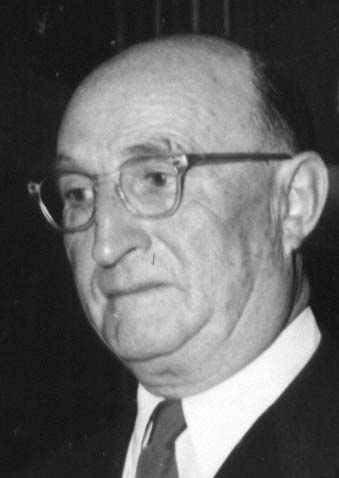

| THE STORY OF MY LIFE by Harry (Aaron Gersik) Sokolik, z''l (Edited excerpts printed with permission of Regina Smith and Gary H. Sokolik. All rights reserved.) |

Printed with permission of Rick Sokolik |
| Our house was in Lomzatze, which was within
two miles
from the Big City of Lomza. Not too many people lived on our block.
There
was one big court, at the end of which was a brewery. On both sides of
the brewery were orchards with all sorts of fruit, and a few blocks
away
from our house, a river was flowing by. The river served as the
boundary
between Germany and Poland. On one side of us lived a Russian officer
from
"Grizia." He was a Cavalerist. On the other end of our
house
lived a carpenter that used to make wagons. There were also two saloons
not far away. Our home was situated between the fruit orchards and the
vegetable gardens.
Also, within a few miles there were large, large plains of wheat and all sorts of grain. Within about six miles there were the beginnings of a huge vast forest. Once you entered and walked for a while, you could easily get lost. The forest stretched all the way to Bialastok, a big city. In the back of the brewery was a mountain with yellow sand, near the river. Everybody from all over the town used to come to pick up sand to spread on the floor before the Sabbath. This was a means of cleanliness and beautification of the house. The roof of our house consisted of straw. the outside walls were made of logs, the inside was made out of paper. It was called "paper hangers." In summer the surroundings were beautiful. Everything was in full bloom in Lomzatze. Both sides of the street were lined with trees, and the goyim that lived there -- who themselves were real old -- said that the trees were hundreds of years old. The trees were lined up from Lomzatze all the way to Lomza and to Warsaw. As one entered Lomza, you encountered a City Park. That's where the people used to gather on Saturdays and Sundays and enjoy its beauty. They would take walks from Lomza to Lomzatze. On the way, there was a well. The water was cold and fresh; it tasted better than beer. People were always lined up to have a drink of this delightful water. On the other side of the park was the Opera House and not far from the Opera House was the New Market place, where all the drozkies -- taxicabs -- were lined up. From the New Market place one could go to the Village of Fiantnitze. There we find a bridge that we had to cross. Through the road that crossed this bridge they would deliver timber to Germany. The river that separated the two cities was called "Nerer" and extended all the way to Germany. The street where the New Market was located ran all the way to the Lomza Synagogue. On both sides of the Shul there were several betamedrushem -- smaller worship houses of learning and praying. Not far from the Great Synagogue was the Lomza Yeshiva -- the college of learning for Jewish young people. The Polacks called the street where the Great Synagogue was located Deuze Gas. From this street you could go to the Old Market, where all the big - big markets (Yarid) used to take place, and where people from all around used to come, and they could find everything their hearts desired. There were bakers, and butchers; you could buy fruit and milk products, like the best cheeses etc. One could even get Tefillin, Sidurim, Gimous and Machzeirim -- all kinds of Jewish books of learning. In the middle of this huge market place, there was a well with refreshing water. On the other side of the Old Market were the Rileakes. They were considered the very poor class. Lomza was built on a hill and looked over the Rileakes. Down below ran another river, the Wietrakim. Here, they used to assemble another market where they would deal with cattle, horses, and livestock in general, and most of the mills. The penitentiaries were also located here, and the railroad that led to Zalerove. In Lomzatze two divisions of soldiers were stationed. One division was soldiers on foot; the other the Druze - Cavalieria - cavalcade - on horses. Close to Lomza, not far from the Vietrakim, was a village called Kunarzitz that was also occupied by soldiers. * * *
|
|||